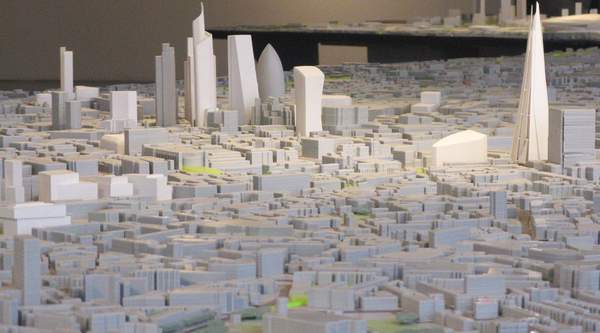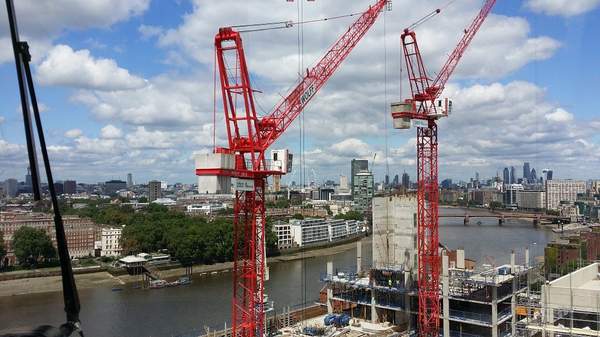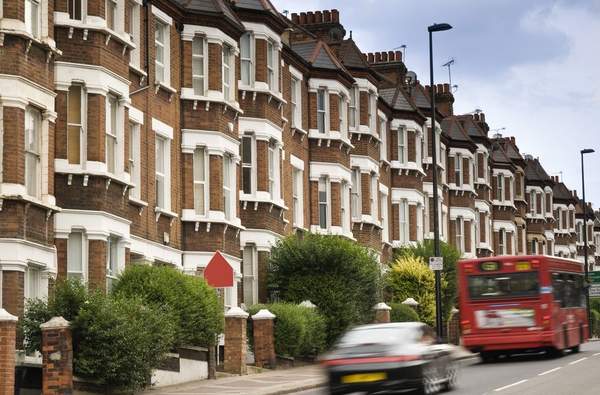Prime London developments are currently shaping the city at an unprecedented rate, but will new financial obstacles now jeopardise construction in progress? The number of new homes within the inner London circle has increased by 40% in the past 18 months, with a 25% increase in planned activity over the next ten years - and a combined sales value of £60 billion. Now that the housebuilders and the property industry on the whole is reeling from Brexit, the next question is: when will developments in the current pipeline come to fruition?

What’s in the pipeline?
According to the latest London Prime Residential Development Pipeline report published by Arcadis this June, 25,000 units are in the pipeline, with a combined sales total of £60 billion. Planning and construction is now at an unprecedented high, but a peak of 12,000 builds between 2014 and 2017 is expected to dwindle to 3,000 units between 2021 and 2023, although this is based on projections.
Over at the Financial Times, recent reports have stated that 19,000 units are currently being developed in 30 inner London postcodes as part of an overall scheme to deliver 54,000 units in these areas – which takes into account large developments like the Battersea Power Station and Land Securities developments. It has taken the line that this bulk will ‘help to mitigate the housing shortage across the capital’, however, Arcadis states that prime developments ‘barely scratches the surface of the capital’s housing output target set out in the Greater London Authority’s Housing Strategy’ of around 42,000 units per year, rather than over a ten-year span.

Unit numbers by area
The single biggest recipient of additional prime units is the entertainment and commercial area between Battersea to Tower Bridge. St. John’s Wood will increased its stock by 45% over the next ten years, followed by South Bank with an extra 7705 units – a 34% increase. These ‘rocket-boosted’ residential development markets, with an ongoing concentration of high-rise builds, is slowly starting to level out the historically uneven level sales equilibrium between the north and south of the River Thames.
If we take a look at prime developments by postcode, SE1 and SW8 are currently the most active, followed by neighbouring SW1, W1, SW6 and SW18.
It is no surprise that land-constrained areas like Victoria, Bayswater and Pimlico have seen much less growth in terms of construction, - housing units will rise by only 18% in Kensington by 2023) but buoyant overseas investment and increased sales values are continuing to drive the status of this inner fringe.
Financial challenges
The FTSE 100 and the strength of the pound has now regained health, but the Singapore bank has temporarily suspended London property loans.
According to the Arcadis report, the biggest concern for developers involved will not be purchaser demand, but the health of the UK construction industry, and the sustainability of building in the third most expensive construction site in the world, and the most expensive in the whole of Europe.
Private housebuilding seemed to stave off lacklustre growth in the construction industry as a whole between March 2015 and March 2016, with an output increase of 8.4%, and UK commercial lending has risen to a post-2008 high. However, 17 of the UK’s biggest housebuilders raised concerns that a global drop in confidence will make it harder and more expensive to build new homes, exacerbating the housing crisis, particularly in the South East. Housebuilders’ shares have now fallen sharply, and an upcoming shock in the commercial property sector is predicted.

Brexit has now taken centre stage, but there is other property news in progress. Various financial concerns, including skills gaps pushing up wages, construction costs and land costs could affect deliverability restraints further for developments that gained planning permission since 2014. Over the past twenty years, London property prices per square metre have risen by 432% in Greater London against a national average of 251%. One the biggest upset to London’s existing and future luxury real estate developments has been the doubling of stamp duty levies since the end of 2014. Investors were initially attracted to London with a set of government initiatives to boost prime housing investment, however, a reversal of opinion has now hit developers who are committed to schemes across the city. Hits to profit margins could not only delay existing prime developments, but also affect affordable housing contributions in the process.
What’s next for London’s prime developers?
The next few years will present monumental challenges in the property industry. In the wake of Brexit, Taylor Wimpey shares lost a third of their value, Persimmon shares fell by 27.5%, followed by Crest Nicholson (25.7% drop) and the Berkeley Group (18% reduction).
As a final parting gift to the city at the end of his mayoral term, Boris Johnson has left behind a prime legacy, but whether these developments will battle through the effects of Brexit remains to be seen. Sadiq Khan pledged to construct 50% affordable housing in the mayoral race this May, but affordable housing may now be pushed to the back of the queue as housebuilders chase developments with the biggest returns.
Developers have relying on sales tricks to entice luxury buyers after the stamp duty hike by offering ‘stamp duty paid’ properties, so an £800,000 property will include a £30,000 discount. Tackling oversupply in this fashion will create a 7-point hit on margins, as stated by Business Insider. Brownfield land sites are offering some hope for expanding portfolios as these urban plots are still rising in value, driven by demand and new legislation which automatically permits brownfield sites to be developed.
The UK now needs to reassert itself as a global investment destination after its historic decision to leave the EU. The pound will continue to fall in the short term which has opened the market up to overseas investors, but whether multi-national employers will remain in the UK will be decided by how the economy withstands shocks to its system. The lettings markets could expect a temporary boost while overseas employees wait to see if their business prospects hold before buying in the UK. If the EU does begin to slowly break apart in the long term as other countries follow suit that would almost certainly enhance Britain’s appeal once again as a safe haven amidst mounting European woe.
Market opportunities
Due to popular demand we will be hosting an event to discuss the financial aspects of the Brexit result and its effect on the Residential Development Market in the UK.
2016 is a crucial time to find out the latest opportunities in residential development funding and investment sectors. On July 5, LD Events will be staging our annual Resi Development Funding conference at the ICO Conference Centre in London. We have assembled a superb line up of development market experts, investors and funders, including Andrew Brentnall, director and head of funding and development at Savills and Alexandra Lanni, head of transactions at Laxfield Capital to examine the current market.
This event is likely to sell out again so please book early to guarantee your place.